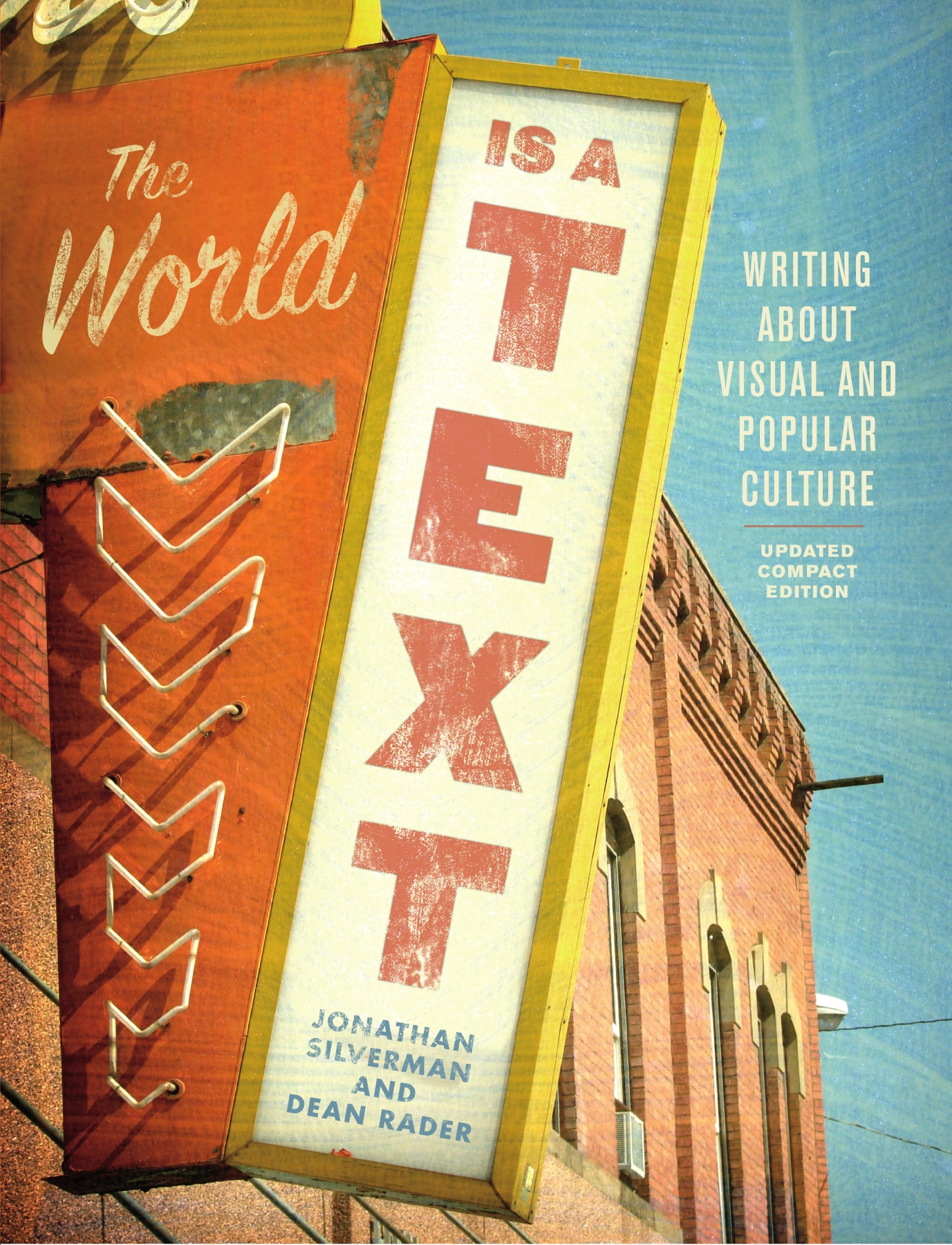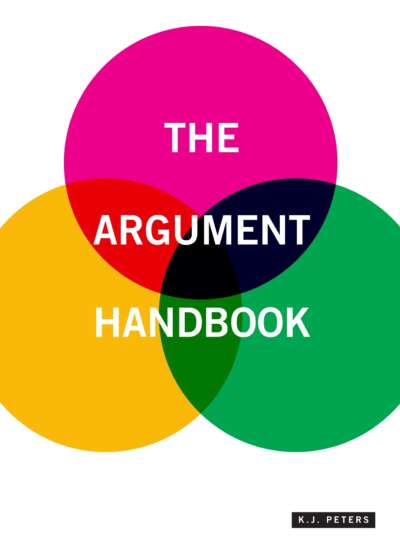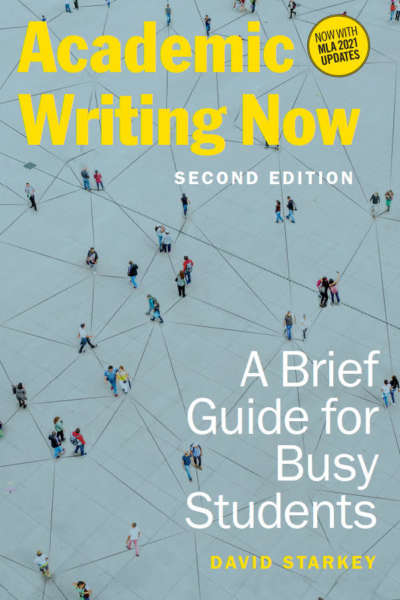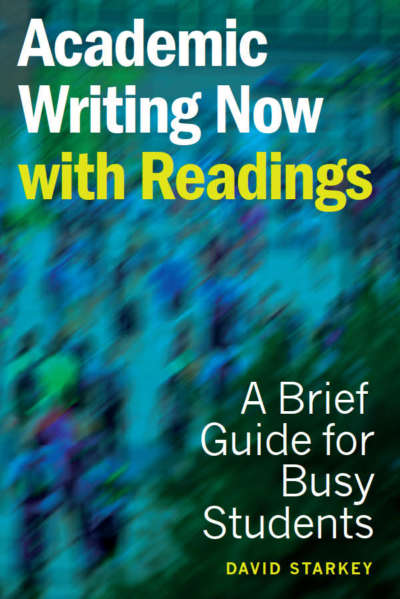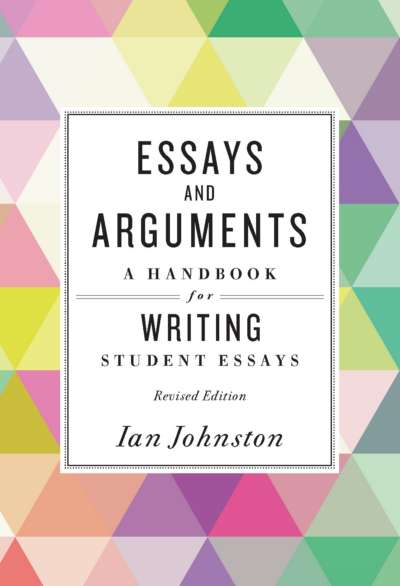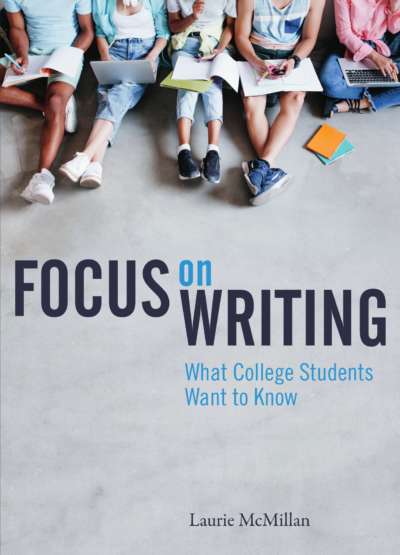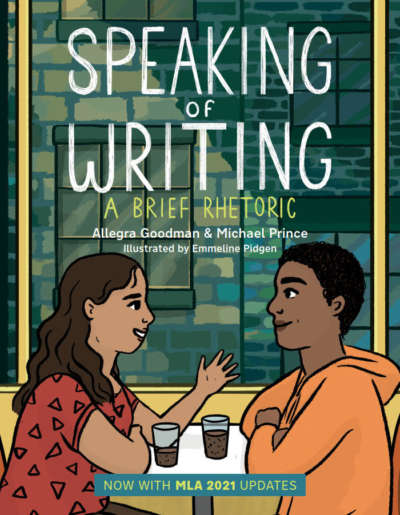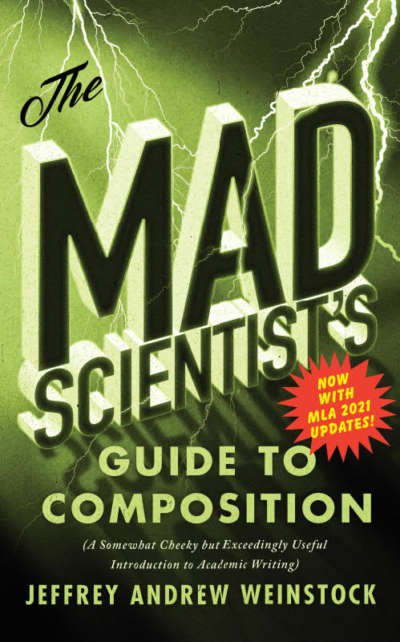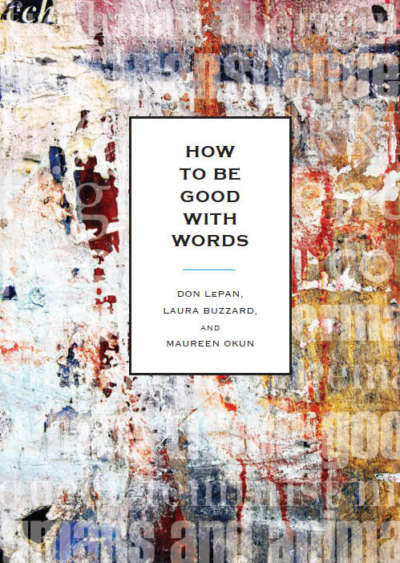Wherever we look today, popular culture greets us with “texts” that make implicit arguments; this book helps students to think and write critically about these texts. The World Is a Text teaches critical reading, writing, and argument in the context of pop-culture and visual examples, showing students how to “read” everyday objects and visual texts with basic semiotics. The book shows how texts of all kinds, from a painting to a university building to a pair of sneakers, make complex arguments through their use of signs and symbols, and shows students how to make these arguments in their own essays.
This new edition is rich with images, real-world examples, writing and discussion prompts, and examples of academic and student writing. The first part of the book is a rhetoric covering argumentation, research, the writing process, and adapting from high-school to college writing, while the second part explores writing about specific cultural topics. Notes, instruction, and advice about research are woven into the text, with research instruction closely tied to the topic being discussed. New to the updated compact edition are chapters on fashion, sports, and nature and the environment.
Comments
“Students often feel stifled about writing and lack the passion to polish their skills in composition and rhetoric. The World Is a Text opens doors for writers and enables students to understand the power of reading and writing for life. I absolutely love the addition of chapters on nature, sports, fashion, and technology. These topics are terrific, and they broaden the scope of the book.” — Colleen Ruggieri, Ohio University
“The World Is a Text is eminently accessible, familiar in its rhetorical vocabulary and engagement with the writing process, and comprehensive in projecting subject matter for college writing classes. From pop-culture topoi like fashion, music, and sports to complex social problems rooted in identity, gender, race, and technology, Silverman and Rader provide a wealth of invention heuristics in a dozen categories. Most interesting, perhaps, The World is a Text links writing self-consciously to reading—that crucial, complementary literate practice too often taken for granted in college writing textbooks.” — Peter Vandenberg, DePaul University Chicago
PART I: WRITING ABOUT THE WORLD
PART 2: WRITING ABOUT SPECIFIC TYPES OF TEXTS
- Introduction: Reading and Writing about the World around You
- Some Things to Think about as You Write about the World around You
- A Quick Guide to Writing about the World around You
- Writing about the World around You: The Genres
- Other Essay Ideas
- Resources
- Sample Essay
- Chapter 12: Reading and Writing about Race and Ethnicity
- Some Things to Think about Writing about Race and Ethnicity
- A Quick Guide to Writing about Race, Class, and Ethnicity
- Writing about Race and Ethnicity: The Genres
- Resources
- Sample Student Essay
- Chapter 13: Reading and Writing about Public and Private Space
- A Quick Guide to Writing about Public Space
- Public Space: The Genres
- Other Essay Ideas
- Resources
- Sample Essay
- Chapter 14: Reading and Writing about Nature and the Environment
- A Quick Guide to Writing about Nature and the Environment
- Writing about Nature: The Genres
- Other Essay Ideas
- Resources
- Chapter 15: Reading and Writing about Gender
- A Quick Guide to Writing about Gender
- Writing about Gender: The Genres
- Other Essay Ideas
- Resources
- Chapter 16: Reading and Writing about Fashion
- A Quick Guide to Writing about Fashion
- Writing about Fashion: The Genres
- Other Essay Ideas
- Resources
- Chapter 17: Reading and Writing about Visual Culture
- A Quick Guide to Writing about Visual Culture
- Writing about Visual Culture: The Genres
- Other Essay Ideas
- Resources
- Sample Student Essay
- Chapter 18: Reading and Writing about Movies
- A Quick Guide to Writing about Movies
- Writing about Movies: The Genres
- Other Essay Ideas
- Resources
- Sample Student Essay
- Chapter 19: Reading and Writing about Television
- A Quick Guide to Writing about Television
- Writing about Television: The Genres
- Other Essay Ideas
- Resources
- Sample Student Essay
- Chapter 20: Reading and Writing about Sports
- A Quick Guide to Writing about Sports
- Writing about Sports: The Genres
- Other Essay Ideas
- Resources
- Chapter 21: Reading and Writing about the Media and Advertising
- Some Things to Think about When Writing about Media
- A Quick Guide to Writing about Media and Advertising
- Writing about Media and Advertising: The Genres
- Other Essay Ideas
- Resources
- Sample Student Essay
- Chapter 22: Reading and Writing about Music
- Things to Consider When Writing about Music
- A Quick Guide to Writing about Music
- Writing about Music: The Genres
- The Researched Paper
- Other Essay Ideas
- Resources
- Chapter 23: Reading and Writing about Technology
- A Quick Guide to Writing about Technology
- Writing about Technology: The Genres
- Other Essay Topics
- Resources
Jonathan Silverman is Associate Professor of English and Director of American Studies at the University of Massachusetts Lowell. Dean Rader is Professor of English at the University of San Francisco.
To see chapter 13 of The World is a Text, “Reading and Writing about Public and Private Space,” click here. (Opens as a PDF.)
This book includes a website with links to online readings, compiled by the authors, that complement the individual chapters. The website can be accessed here.

